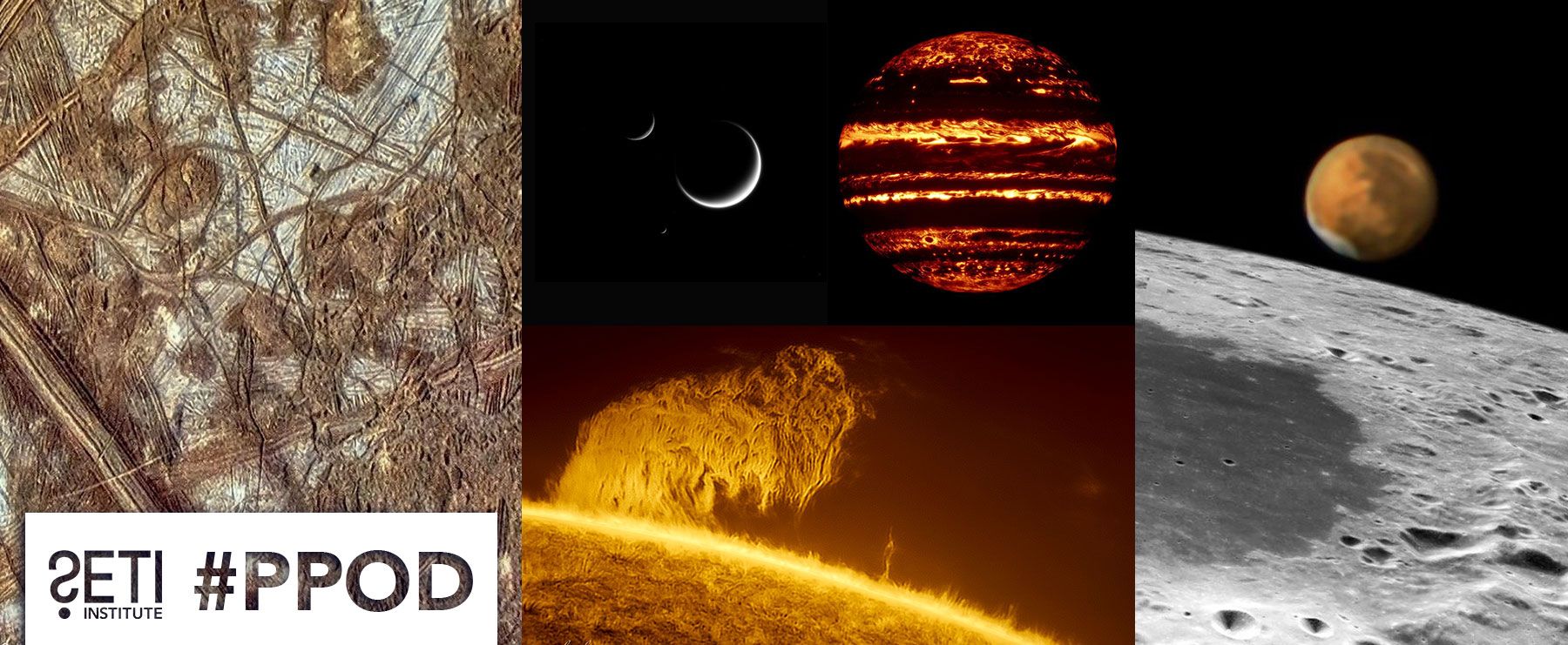
Planetary Picture of the Day
Week of December 26, 2022
Saturn, Mars, Jupiter and so much more to see this week!
Monday, December 26, 2022
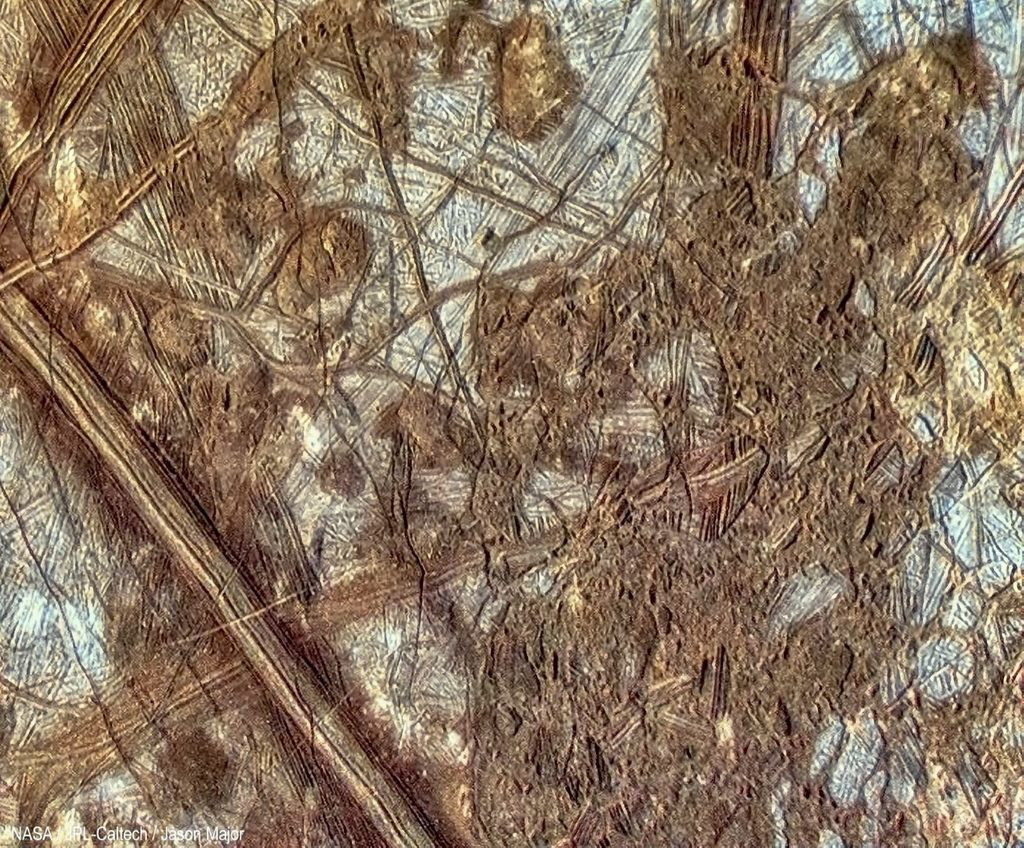
Credit: NASA / JPL / J. Major
Europan Surface
This color-composite image of the surface of Jupiter's moon Europa was captured in IR, G, and UV filters on December 15, 1997, by NASA's Galileo spacecraft. With a potential salty-water ocean below the icy surface, Europa is one of the most promising places in our solar system to find present-day environments suitable for some form of life beyond Earth.
Tuesday, December 27, 2022
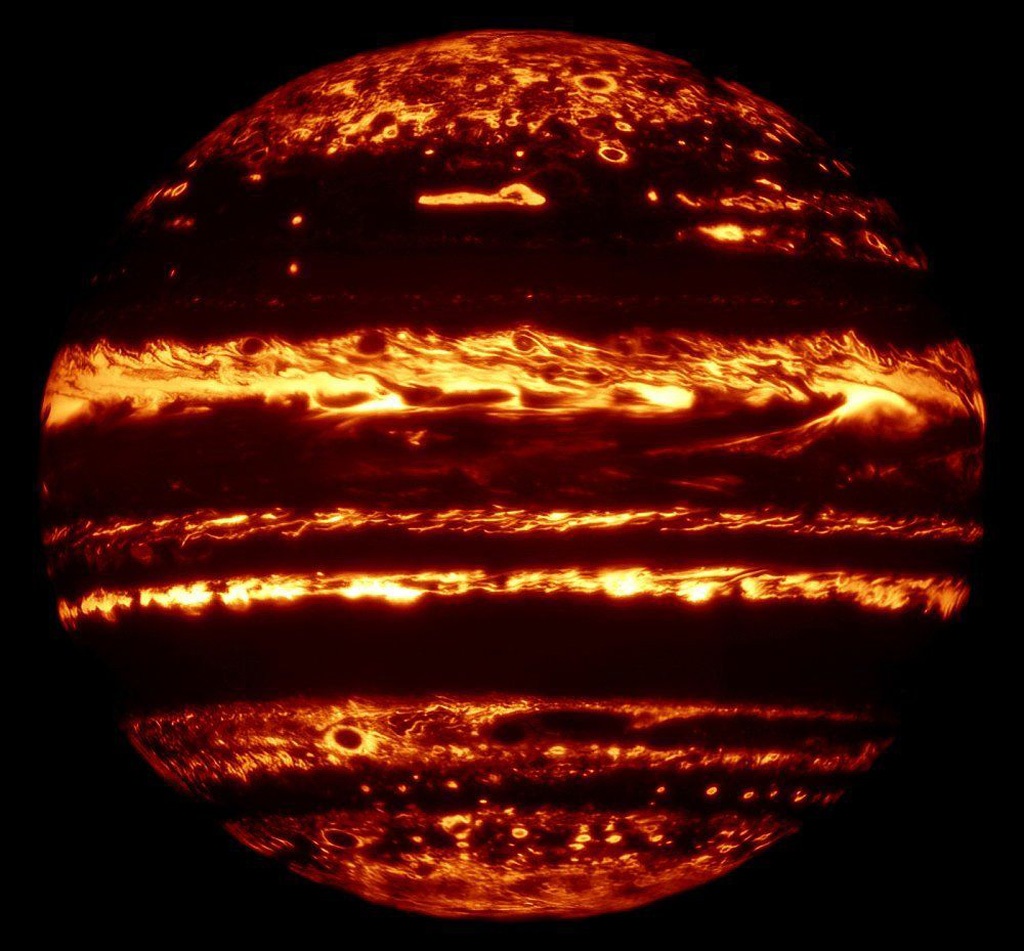
Credit: Gemini Observatory / NOIRLab / NSF / AURA / Wong et al. / de Pater et al. / M. Zamani
Jupiter in Infrared
This infrared view of Jupiter was created from data captured on January 11, 2017, with the Near-InfraRed Imager on the Gemini North telescope. In the image, warmer areas appear bright, including four large hot spots that appear in a row just north of the equator. South of the equator, the oval-shaped and cloud-covered Great Red Spot appears dark.
Wednesday, December 28, 2022
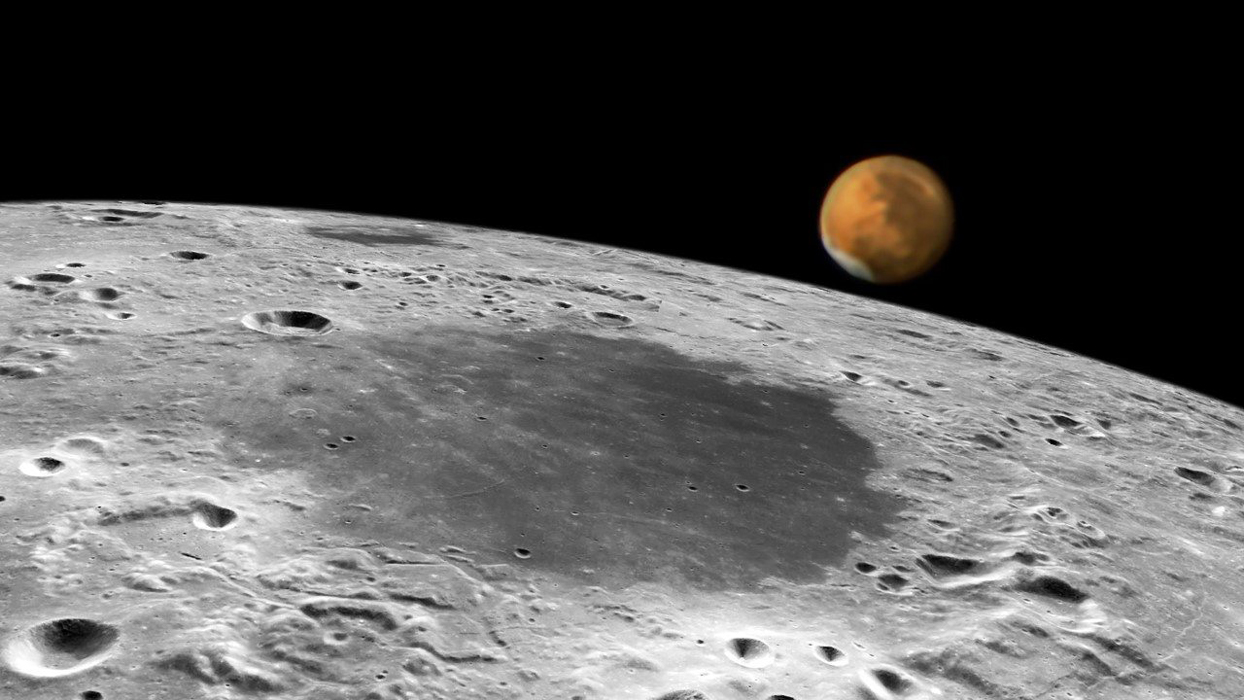
Credit: Lunar imagery by QuickMap NASA LRO/LROC
Processing credit: Ioan Nemes / GalaxyArtmedia
Lunar Occultation of Mars
On December 7-8, 2022, as seen from Earth, the Moon passed in front of Mars in an event called an 'occultation'. Prior to the event, Ioan Nemes put together this simulated version using NASA imagery. Grimaldi Crater is the large crater shown. Watch a short video of the simulation here: https://buff.ly/3WQ3fuQ
Thursday, December 29, 2022
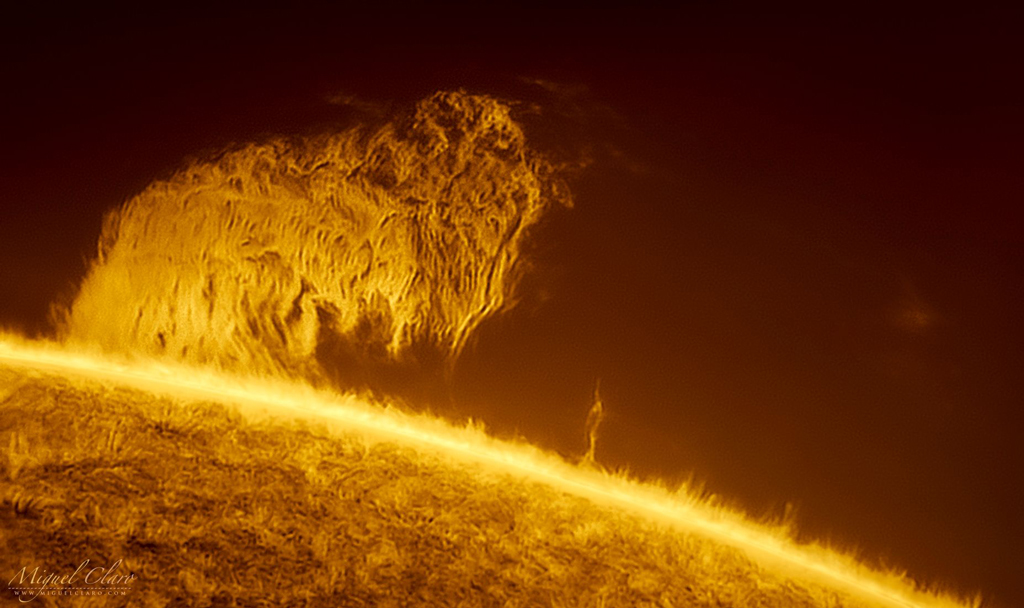
Credit: Miguel Claro
Large, Mammoth-Shaped Solar Prominence
Captured on 25 January, 2022, from Portugal, this high-resolution image shows a massive solar prominence erupting from the solar limb. During a sequence of images, the prominence changed in appearance until it presented an incredible shape that resembled the silhouette of a mammoth, a large mammal extinct for over 5,000 years.
Friday, December 30, 2022
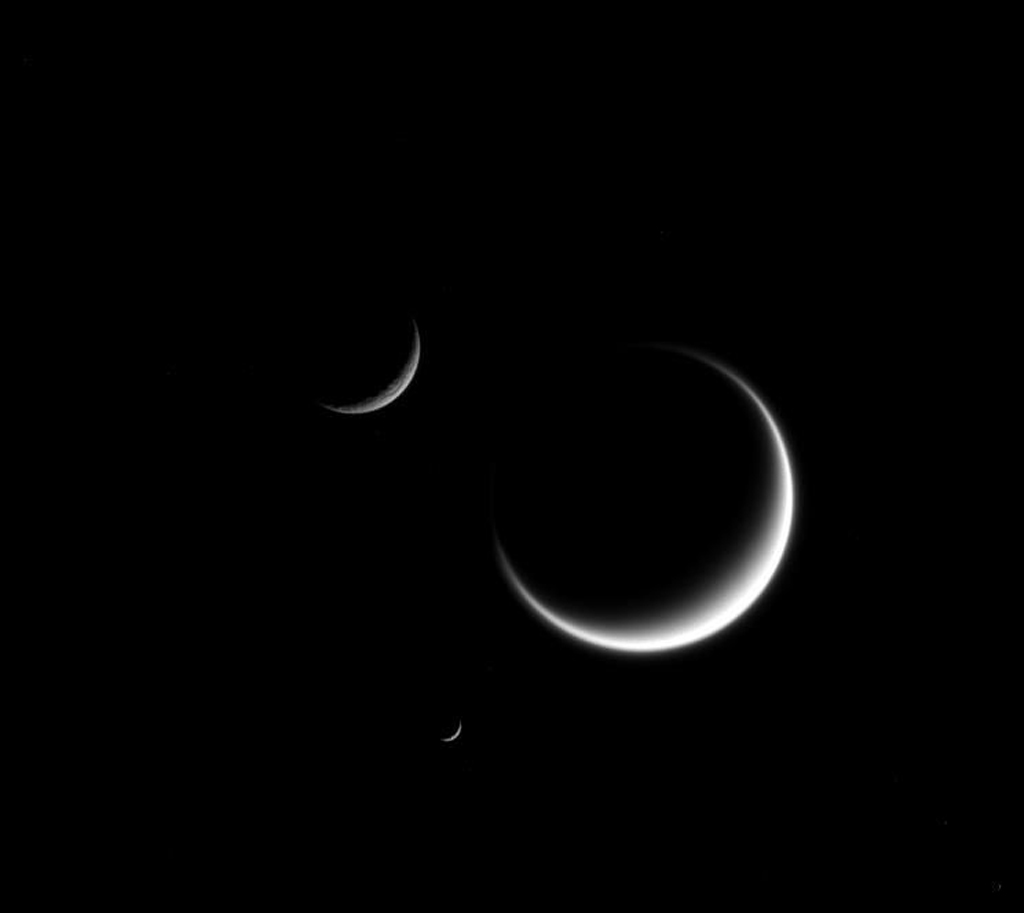
Credit: NASA/JPL-Caltech/Space Science Institute
Saturnian Landscapes
Titan (3,200 miles or 5,150 kilometers across), Mimas (246 miles or 396 kilometers across), and Rhea (949 miles or 1,527 kilometers across) are visible in this image captured by Cassini on March 25, 2015. Titan, the largest moon in this image, appears fuzzy because only its cloud layers are seen. And because Titan's atmosphere refracts light around the moon, its crescent "wraps" just a little further around the moon than it would on an airless body. Rhea (upper left) appears rough because its icy surface is heavily cratered. And a close inspection of Mimas (center bottom), though difficult to see at this scale, shows surface irregularities due to its own violent history.





